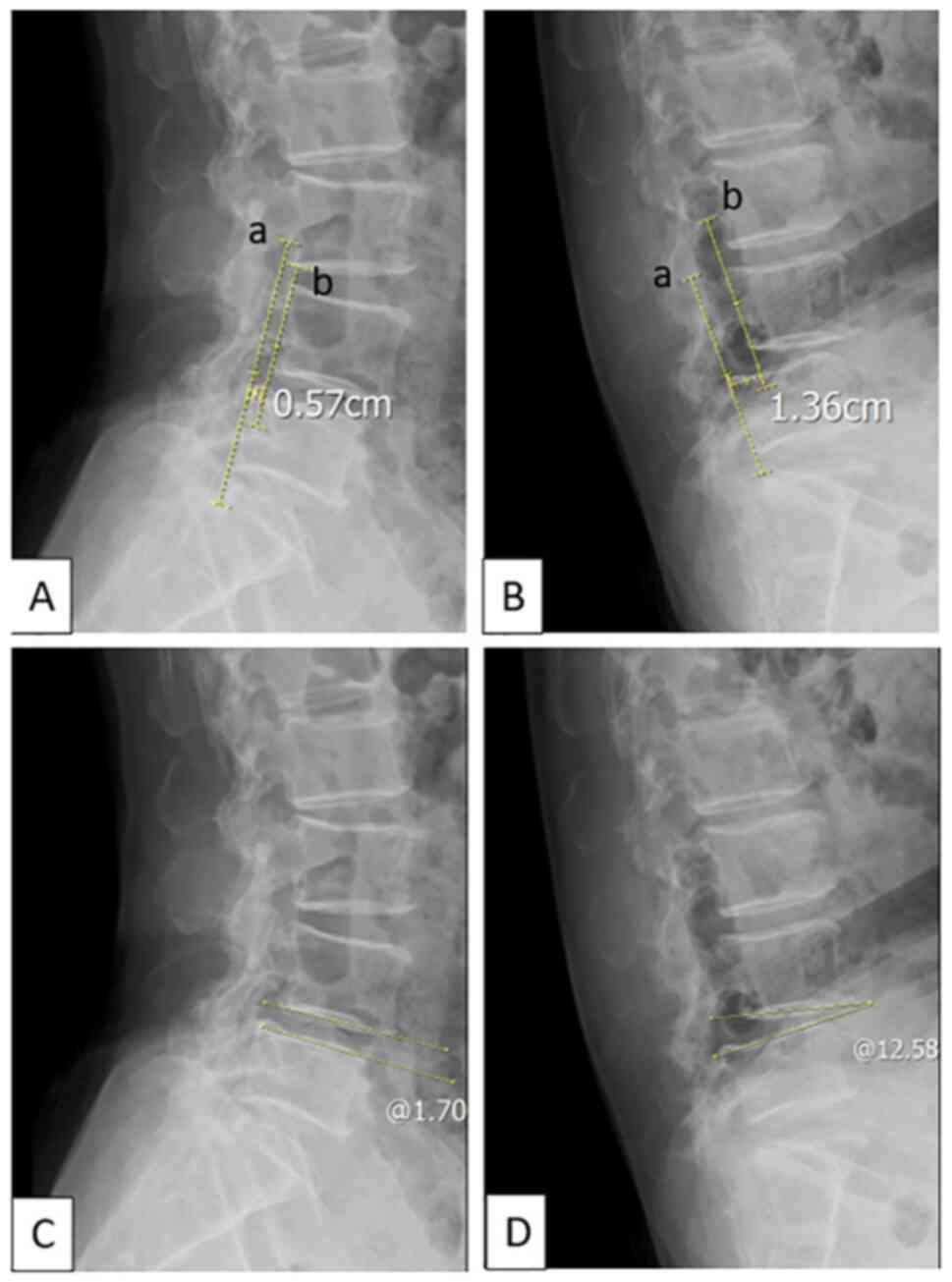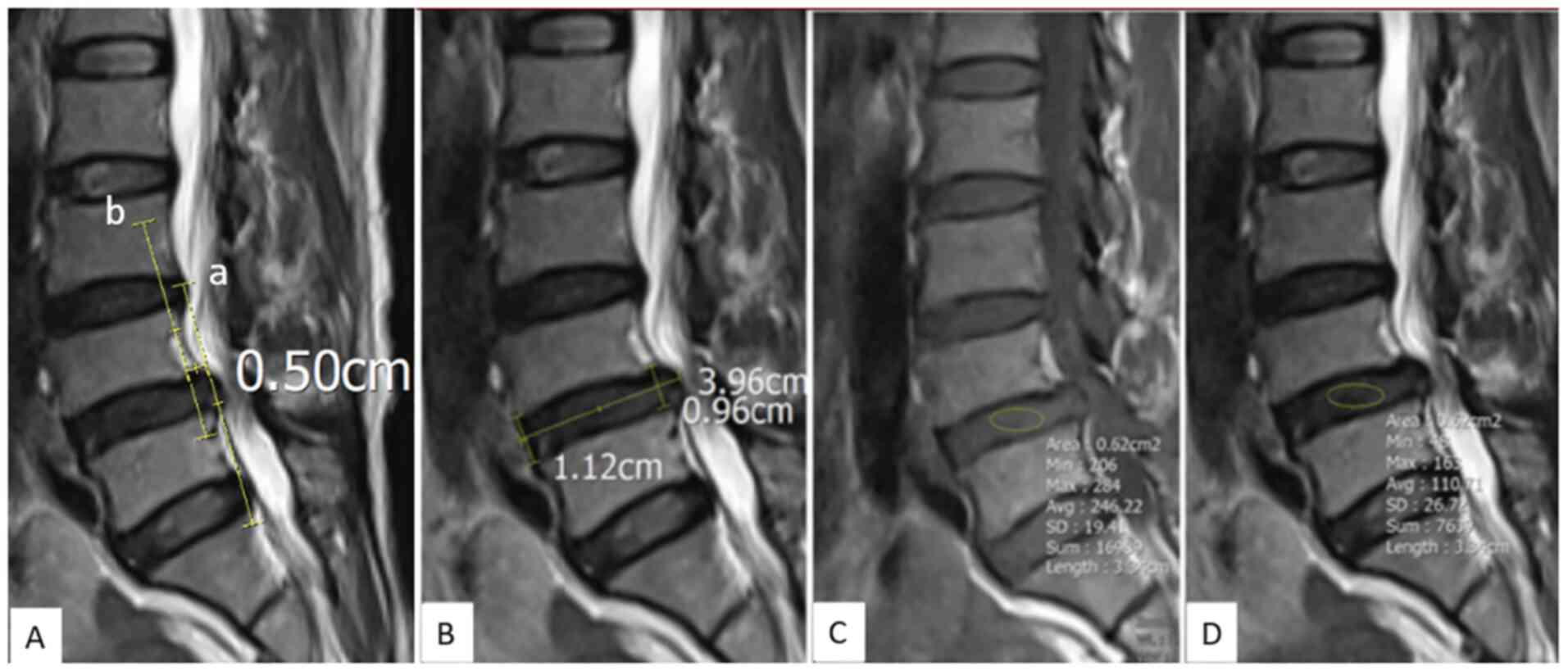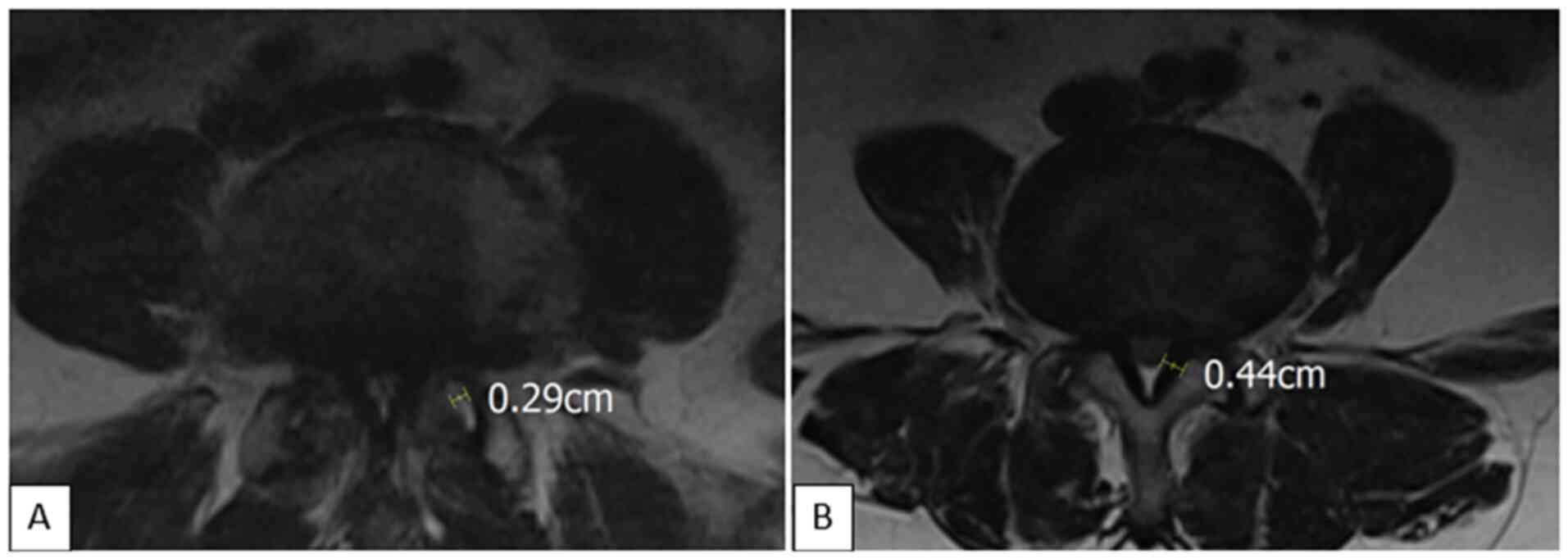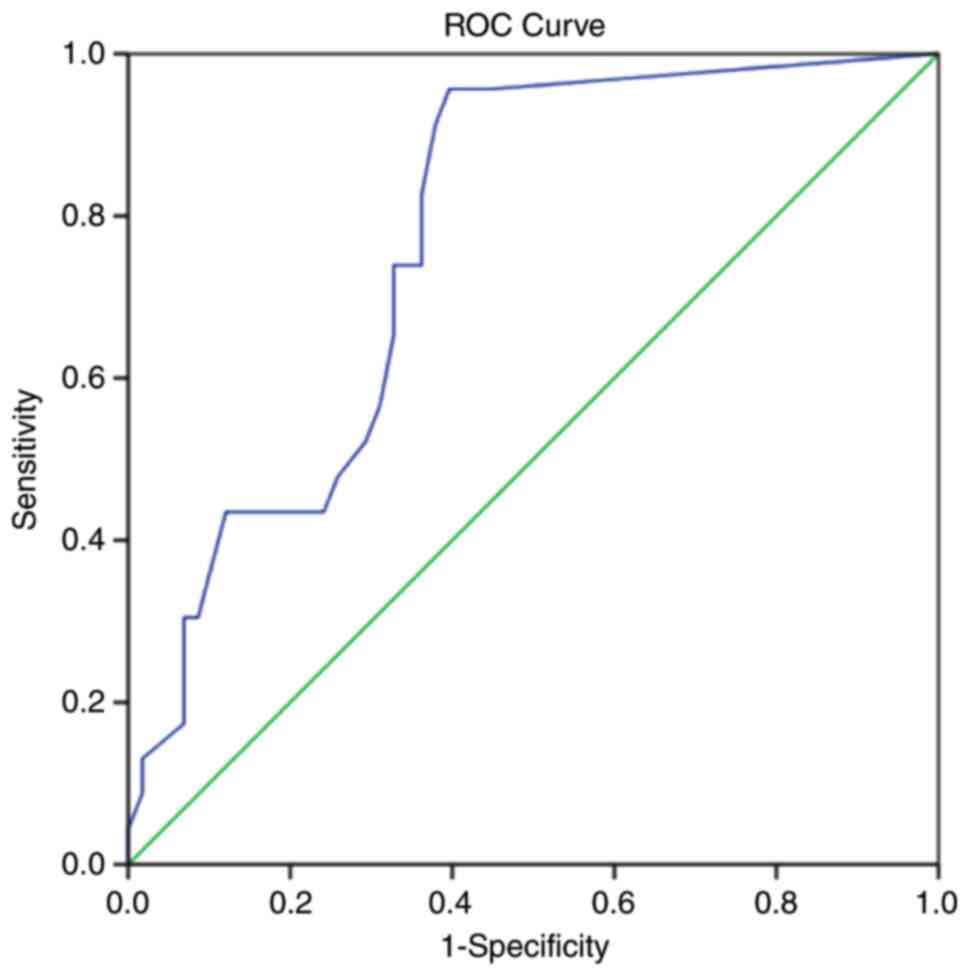|
1
|
Greenberg MS: Spine and Spinal Cord. In:
Handbook of Neurosurgery. Eighth edition, New York, Thieme,
pp1098-1099, 2016.
|
|
2
|
Jacobsen S, Sonne-Holm S, Rovsing H,
Monrad H and Gebuhr P: Degenerative lumbar spondylolisthesis: An
epidemiological perspective: The Copenhagen osteoarthritis study.
Spine (Phila Pa 1976). 32:120–125. 2007.PubMed/NCBI View Article : Google Scholar
|
|
3
|
Rosenberg NJ: Degenerative
spondylolisthesis. Predisposing factors. J Bone Joint Surg Am.
57:467–474. 1975.PubMed/NCBI
|
|
4
|
Sanderson PL and Fraser RD: The influence
of pregnancy on the development of degenerative spondylolisthesis.
J Bone Joint Surg Br. 78:951–954. 1996.PubMed/NCBI View Article : Google Scholar
|
|
5
|
Errico T, Blondel B and Xavier S: Schmidek
& Sweet operative neurosurgical techniques: Indications,
methods, and results. Management of Degenerative Lumbar Stenosis
and Spondylolisthesis 6th edition. Philadelphia, Elsevier Saunders,
pp1891-1899, 2012.
|
|
6
|
Standaert CJ and Herring SA:
Spondylolysis: A critical review. Br J Sports Med. 34:415–422.
2000.PubMed/NCBI View Article : Google Scholar
|
|
7
|
Alfieri A, Gazzeri R, Prell J and
Röllinghoff M: The current management of lumbar spondylolisthesis.
J Neurosurg Sci. 57:103–113. 2013.PubMed/NCBI
|
|
8
|
Kuhns BD, Kouk S, Buchanan C, Lubelski D,
Alvin MD, Benzel EC, Mroz TE and Tozzi J: Sensitivity of magnetic
resonance imaging in the diagnosis of mobile and nonmobile L4-L5
degenerative spondylolisthesis. Spine J. 15:1956–1962.
2015.PubMed/NCBI View Article : Google Scholar
|
|
9
|
Cho IY, Park SY, Park JH, Suh SW and Lee
SH: MRI findings of lumbar spine instability in degenerative
spondylolisthesis. J Orthop Surg (Hong Kong).
25(2309499017718907)2017.PubMed/NCBI View Article : Google Scholar
|
|
10
|
World Medical Association. World Medical
Association Declaration of Helsinki: Ethical principles for medical
research involving human subjects. JAMA. 310:2191–2194.
2013.PubMed/NCBI View Article : Google Scholar
|
|
11
|
Sun Y, Wang H, Yang D, Zhang N, Yang S,
Zhang W and Ding W: Characterization of radiographic features of
consecutive lumbar spondylolisthesis. Medicine (Baltimore).
95(e5323)2016.PubMed/NCBI View Article : Google Scholar
|
|
12
|
Boden SD and Wiesel SW: Lumbosacral
segmental motion in normal individuals. Have we been measuring
instability properly? Spine (Phila Pa 1976). 15:571–576.
1990.PubMed/NCBI View Article : Google Scholar
|
|
13
|
Hayes MA, Howard TC, Gruel CR and Kopta
JA: Roentgenographic evaluation of lumbar spine flexion-extension
in asymptomatic individuals. Spine (Phila Pa 1976). 14:327–331.
1989.PubMed/NCBI View Article : Google Scholar
|
|
14
|
Knutsson F: The instability associated
with disk degeneration in the lumbar spine. Acta Radiologica.
25:593–609. 1944.
|
|
15
|
Shaffer WO, Spratt KF, Weinstein J,
Lehmann TR and Goel V: 1990 Volvo Award in clinical sciences. The
consistency and accuracy of roentgenograms for measuring sagittal
translation in the lumbar vertebral motion segment. An experimental
model. Spine (Phila Pa 1976). 15:741–750. 1990.PubMed/NCBI
|
|
16
|
Farfan HF: The pathological anatomy of
degenerative spondylolisthesis. A cadaver study. Spine (Phila Pa
1976). 5:412–418. 1980.PubMed/NCBI View Article : Google Scholar
|
|
17
|
Chaput C, Padon D, Rush J, Lenehan E and
Rahm M: The significance of increased fluid signal on magnetic
resonance imaging in lumbar facets in relationship to degenerative
spondylolisthesis. Spine (Phila Pa 1976). 32:1883–1887.
2007.PubMed/NCBI View Article : Google Scholar
|
|
18
|
Lattig F, Fekete TF, Grob D, Kleinstück
FS, Jeszenszky D and Mannion AF: Lumbar facet joint effusion in
MRI: A sign of instability in degenerative spondylolisthesis? Eur
Spine J. 21:276–281. 2012.PubMed/NCBI View Article : Google Scholar
|
|
19
|
Yoshiiwa T, Miyazaki M, Notani N, Ishihara
T, Kawano M and Tsumura H: Analysis of the relationship between
ligamentum flavum thickening and lumbar segmental instability, disc
degeneration, and facet joint osteoarthritis in lumbar spinal
stenosis. Asian Spine J. 10:1132–1140. 2016.PubMed/NCBI View Article : Google Scholar
|
|
20
|
Wiltse LL, Newman PH and Macnab I:
Classification of spondylolisis and spondylolisthesis. Clin Orthop
Relat Res. 23–29. 1976.PubMed/NCBI
|
|
21
|
Even JL, Chen AF and Lee JY: Imaging
characteristics of ‘dynamic’ versus ‘static’ spondylolisthesis:
Analysis using magnetic resonance imaging and flexion/extension
films. Spine J. 14:1965–1969. 2014.PubMed/NCBI View Article : Google Scholar
|
|
22
|
Kirkaldy-Willis WH and Farfan HF:
Instability of the lumbar spine. Clin Orthop Relat Res. 110–123.
1982.PubMed/NCBI
|
|
23
|
Wood KB, Popp CA, Transfeldt EE and
Geissele AE: Radiographic evaluation of instability in
spondylolisthesis. Spine (Phila Pa 1976). 19:1697–1703.
1994.PubMed/NCBI View Article : Google Scholar
|
|
24
|
Blumenthal C, Curran J, Benzel EC, Potter
R, Magge SN, Harrington JF Jr, Coumans JV and Ghogawala Z:
Radiographic predictors of delayed instability following
decompression without fusion for degenerative grade I lumbar
spondylolisthesis. J Neurosurg Spine. 18:340–346. 2013.PubMed/NCBI View Article : Google Scholar
|
|
25
|
Fujiwara A, Lim TH, An HS, Tanaka N, Jeon
CH, Andersson GB and Haughton VM: The effect of disc degeneration
and facet joint osteoarthritis on the segmental flexibility of the
lumbar spine. Spine (Phila Pa 1976). 25:3036–3044. 2000.PubMed/NCBI View Article : Google Scholar
|
|
26
|
Snoddy MC, Sielatycki JA, Sivaganesan A,
Engstrom SM, McGirt MJ and Devin CJ: Can facet joint fluid on MRI
and dynamic instability be a predictor of improvement in back pain
following lumbar fusion for degenerative spondylolisthesis? Eur
Spine J. 25:2408–2415. 2016.PubMed/NCBI View Article : Google Scholar
|


















